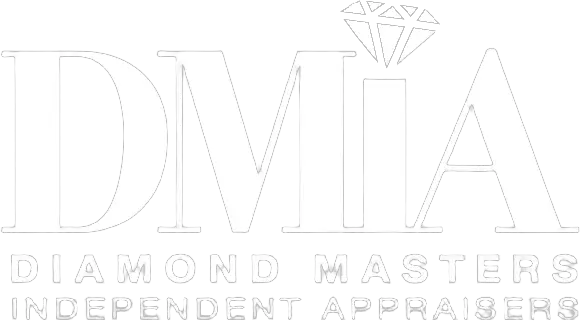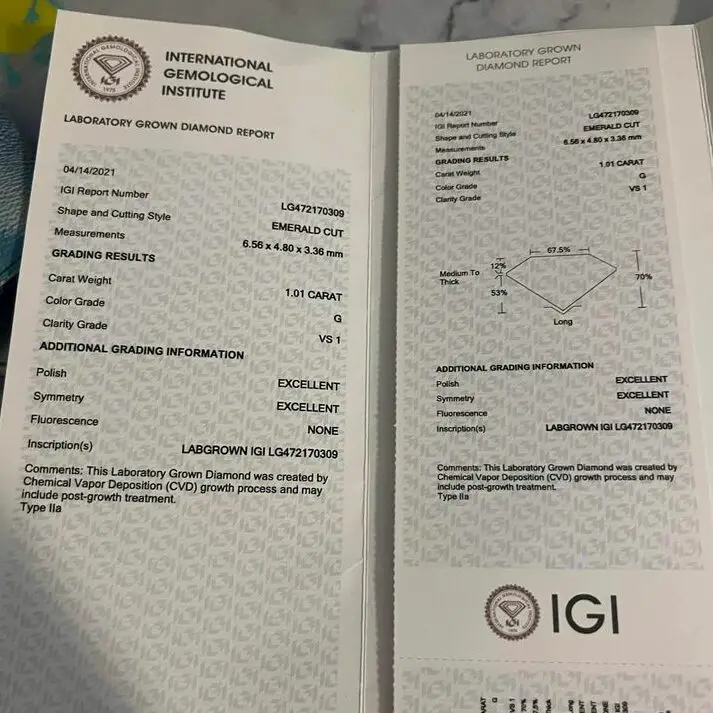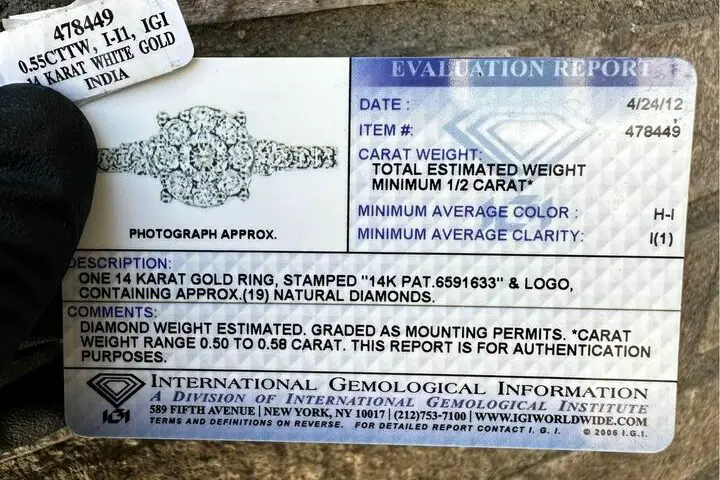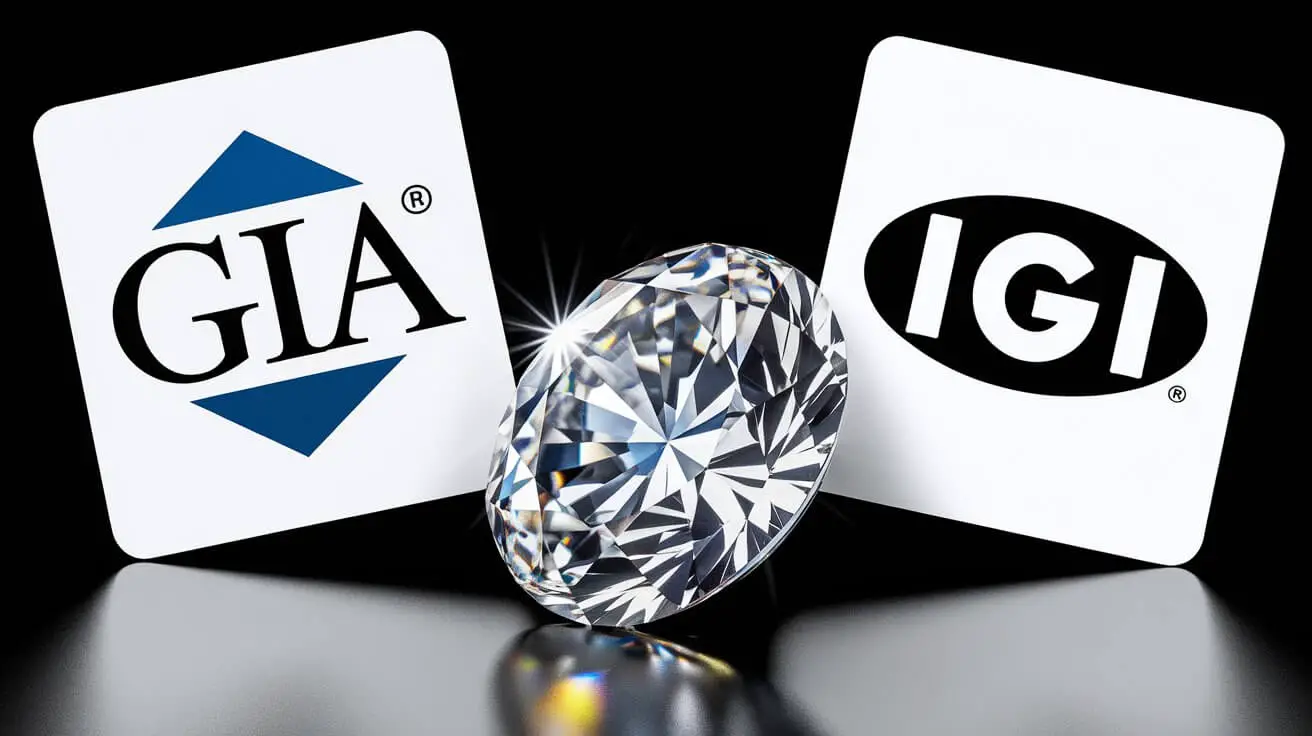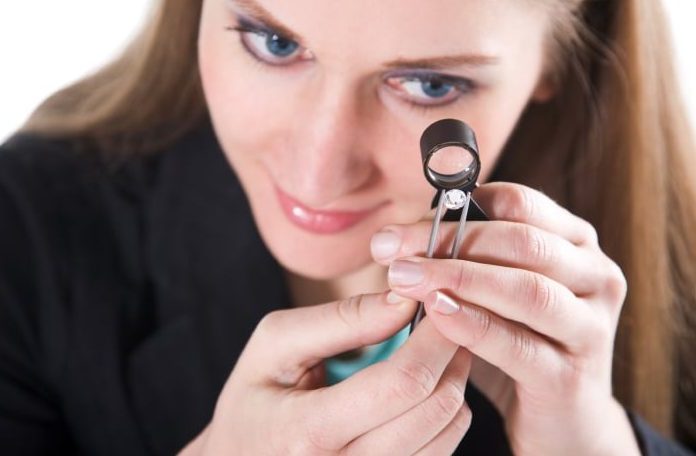Diamond Certification: Your Guide to Understanding Diamond Grading
“This practical guide cuts through technical jargon to help you understand diamond certification, avoid common buying mistakes, and get the best value for your money—with insider tips you won’t find in other articles.”
Why Diamond Certification Matters
When you buy a diamond, you want to know you’re getting what you pay for. A diamond certificate gives you this assurance. This independent report tells you exactly what you’re buying and helps you make a confident decision.
A diamond certificate (also called a grading report) provides:
- Verification that your diamond is natural, not lab-grown
- Confirmation of the diamond’s quality characteristics
- Documentation you can use for insurance
- A way to identify your specific diamond in the future
What is Diamond Certification?
Diamond certification is a process where independent laboratories analyze and grade diamonds. These labs have no connection to jewelers or sellers, so their assessments are unbiased.
During certification, gemologists:
- Examine the diamond under magnification
- Take precise measurements
- Compare the diamond to master stones
- Document the diamond’s characteristics
The report focuses on the “4Cs” of diamond quality:
- Cut
- Color
- Clarity
- Carat weight
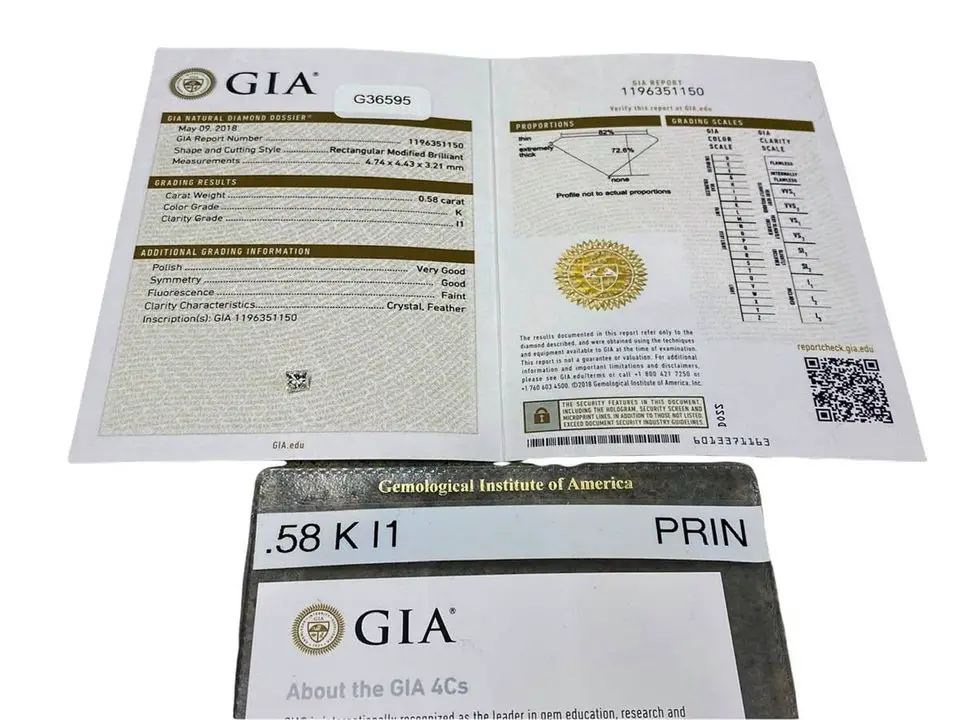
Major Diamond Certification Labs
Not all diamond certificates are equal. The lab that issues the certificate affects its reliability and value. Here are the main certification labs:
GIA (Gemological Institute of America)
- Most respected in the industry
- Created the first diamond grading standards in the 1950s
- Known for strict, consistent grading
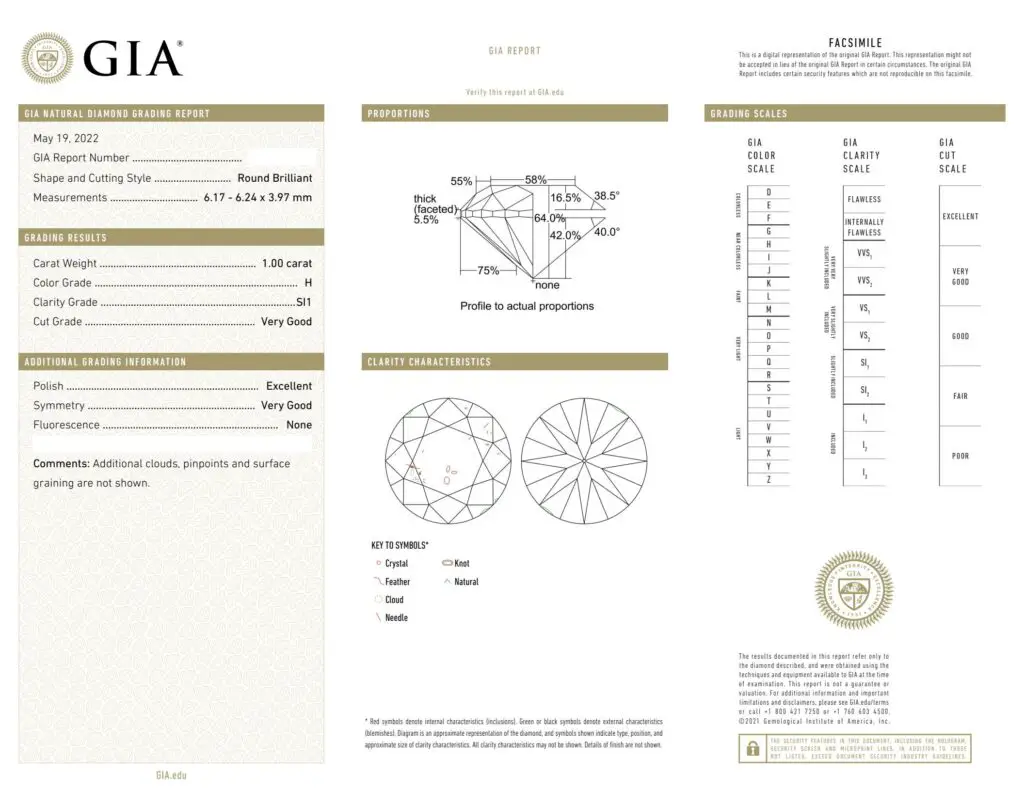
AGS (American Gem Society)
- Highly respected organization
- Provides detailed evaluations
- Maintains high ethical standards
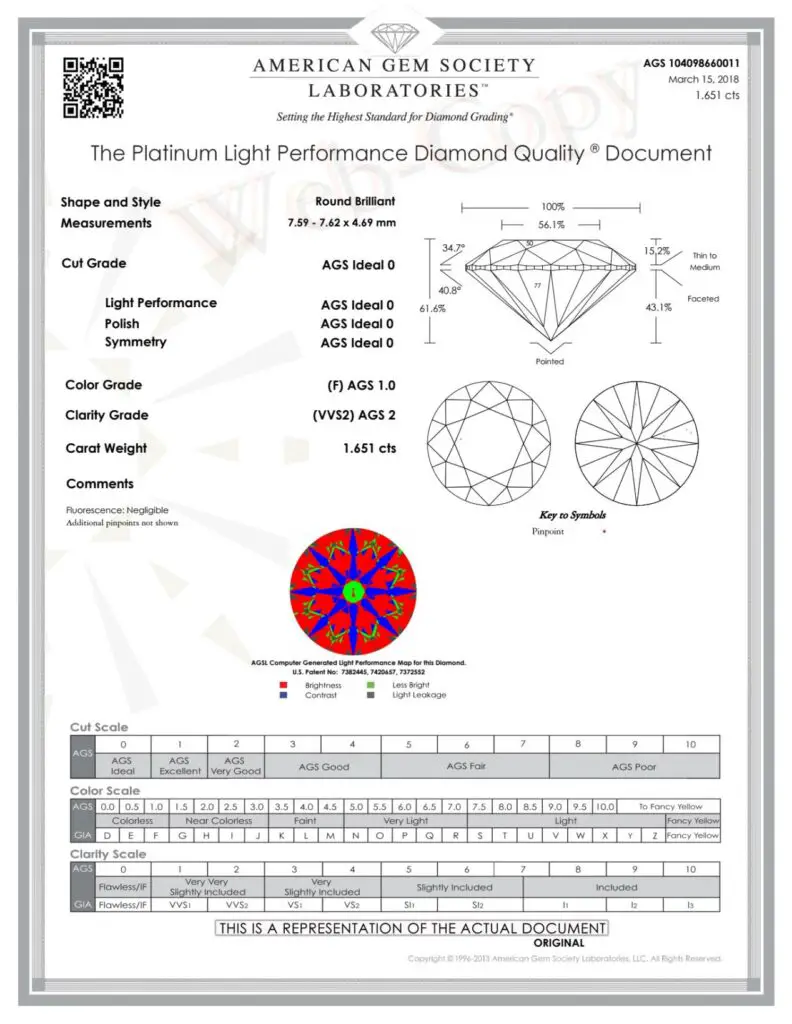
EGL (European Gemological Laboratory)
- Has labs worldwide
- Generally less strict than GIA
- May grade clarity one step higher than GIA
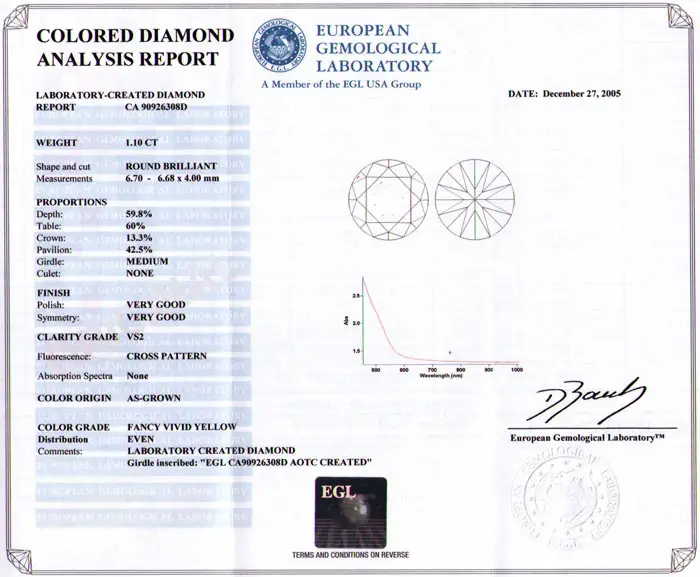

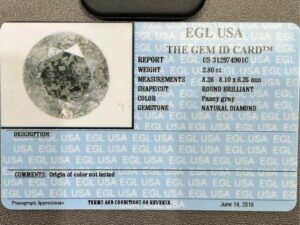
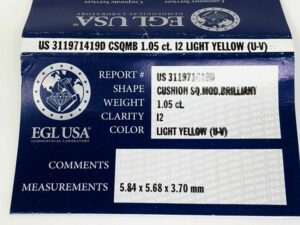
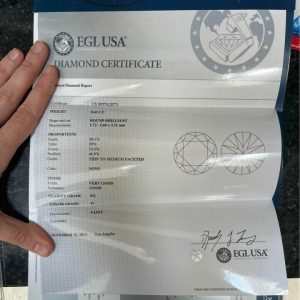
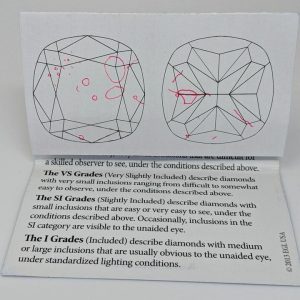
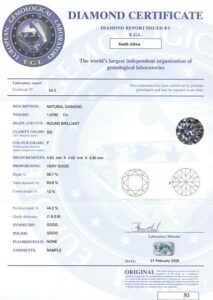
IGI (International Gemological Institute)
- One of the largest certification groups
- Labs in major diamond centers
- Not as widely recognized as GIA
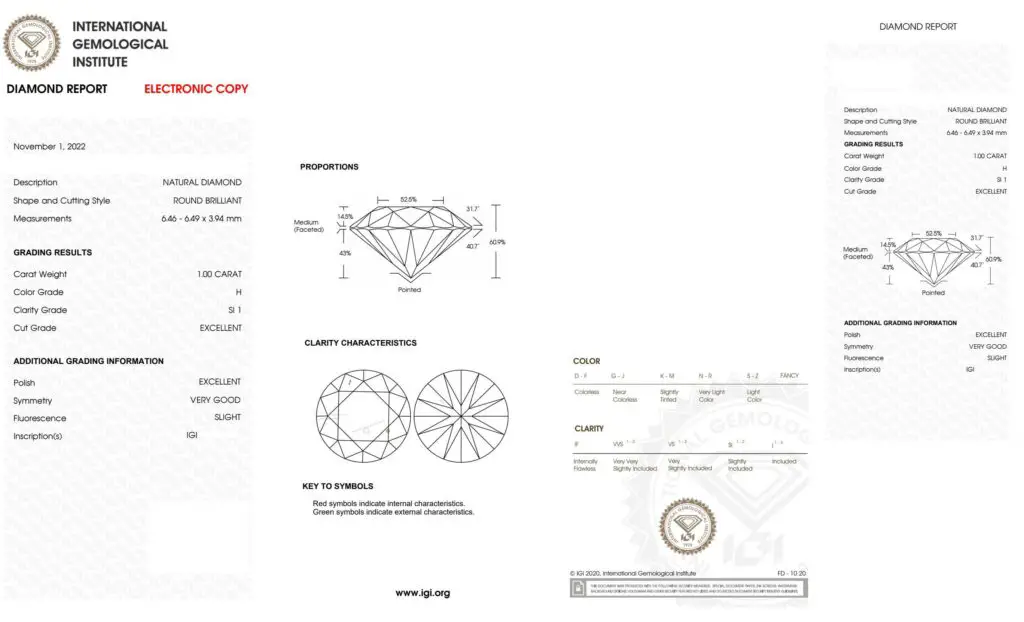
HRD Antwerp
- Based in one of the world’s diamond capitals
- Grades many European diamonds
- Somewhat less conservative than GIA
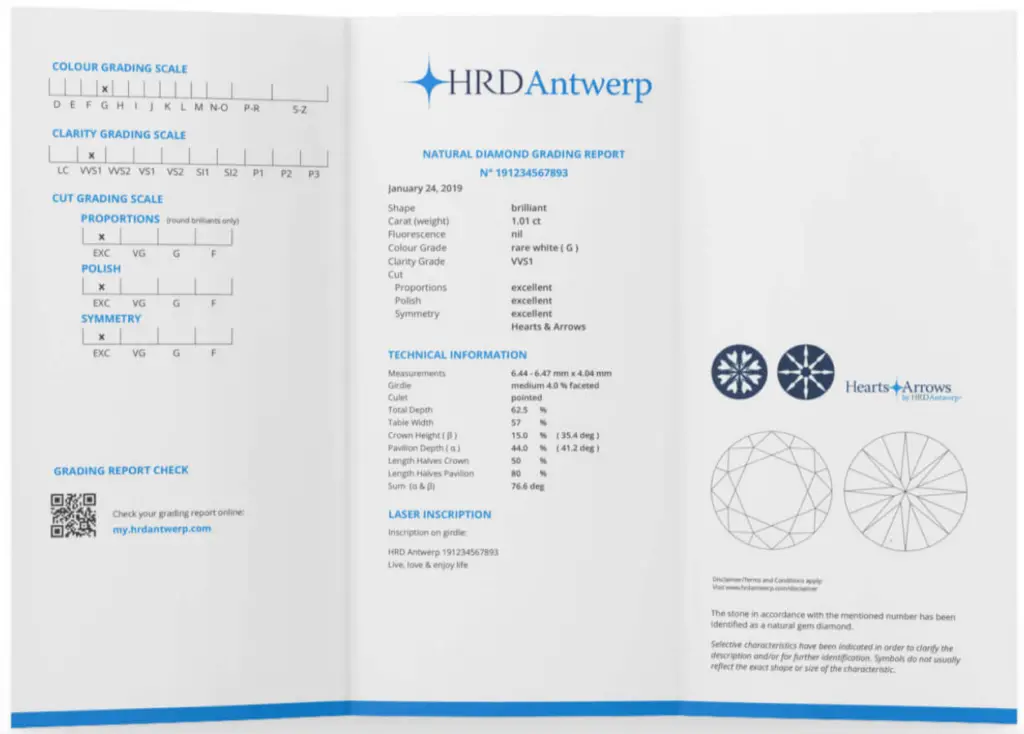
Comparison of Major Diamond Certification Labs:
| Lab Name | Reputation | Grading Standards | Cost Range | Turnaround Time |
|---|---|---|---|---|
| GIA | Excellent | Strict | $85-$460 | 2-3 weeks |
| AGS | Excellent | Strict | $65-$350+ | 1-2 weeks |
| EGL | Good | Slightly lenient | $75-$250 | 2-4 weeks |
| IGI | Good | Respectable | $75-$250 | 2-3 weeks |
| HRD Antwerp | Good | Somewhat lenient | $80-$300+ | 2-4 weeks |
What’s Included on a Diamond Certificate
A diamond certificate contains detailed information about your diamond. While formats vary between labs, most include:
- Report number, date, and lab logo
- Diamond shape, measurements, and weight
- Clarity, color, and cut grades
- Diagram of the diamond
- Map of inclusions (internal flaws)
- Cut proportions
- Polish and symmetry grades
- Unique identification number
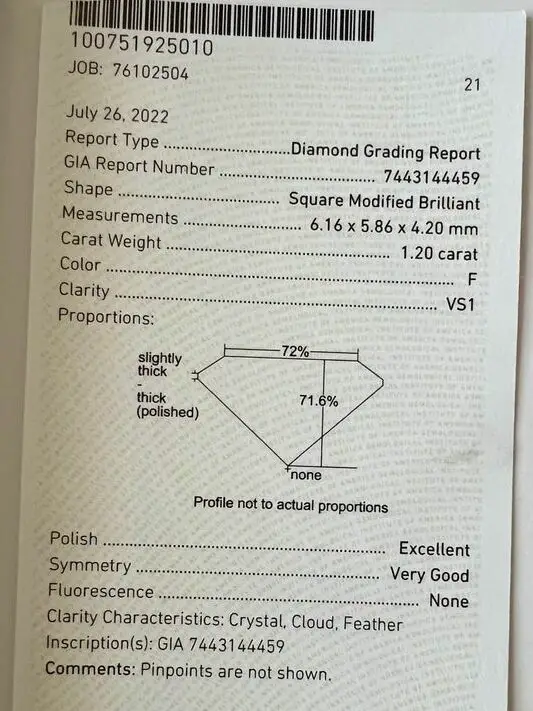
Certificate vs. Appraisal: What’s the Difference?
Many people confuse diamond certificates with appraisals, but they serve different purposes:
Diamond Certificate
- Documents the diamond’s qualities
- Issued by independent labs
- Does not state a monetary value
- Based on standard grading methods
- Used for confirming quality
Diamond Appraisal
- Determines the diamond’s market value
- Created by jewelry appraisers
- States a specific dollar amount
- Often uses certificate data as a starting point
- Used for insurance and resale
Diamond Appraisal Examples:
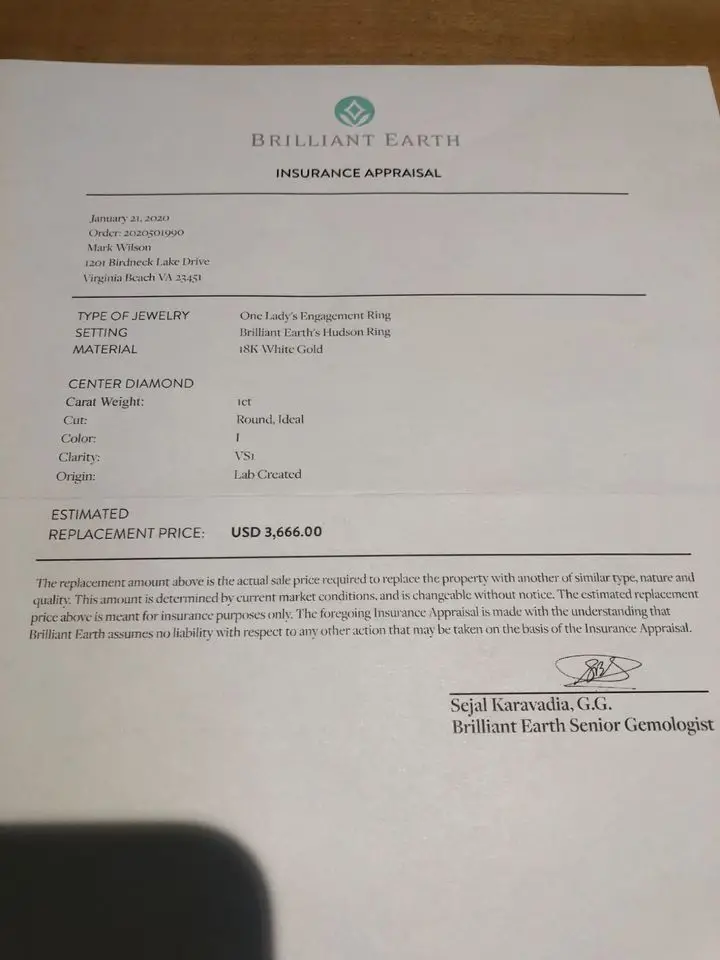
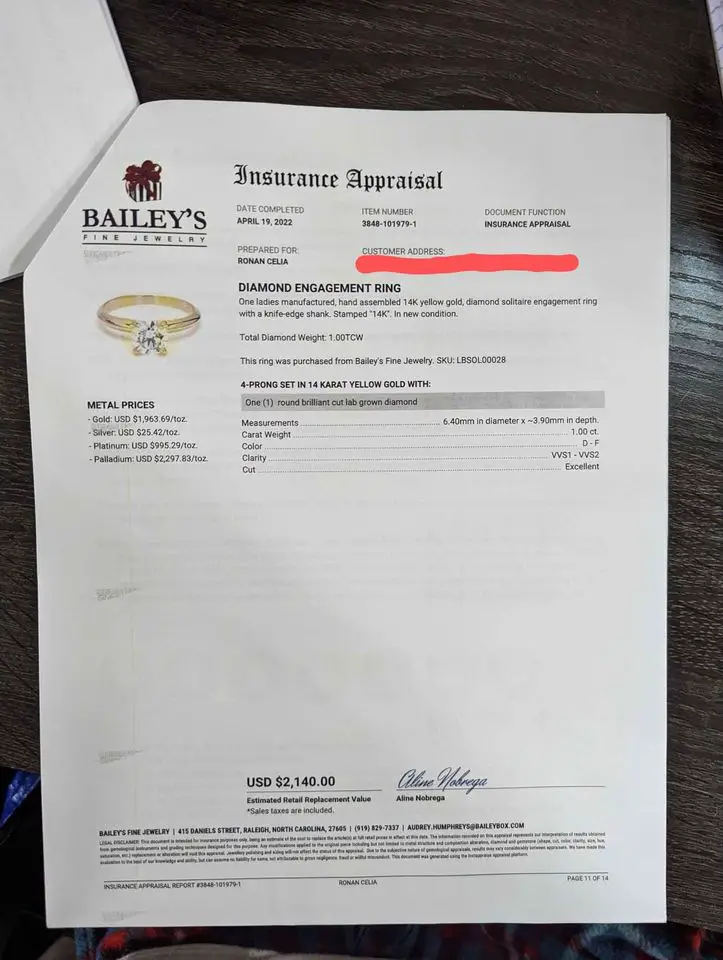
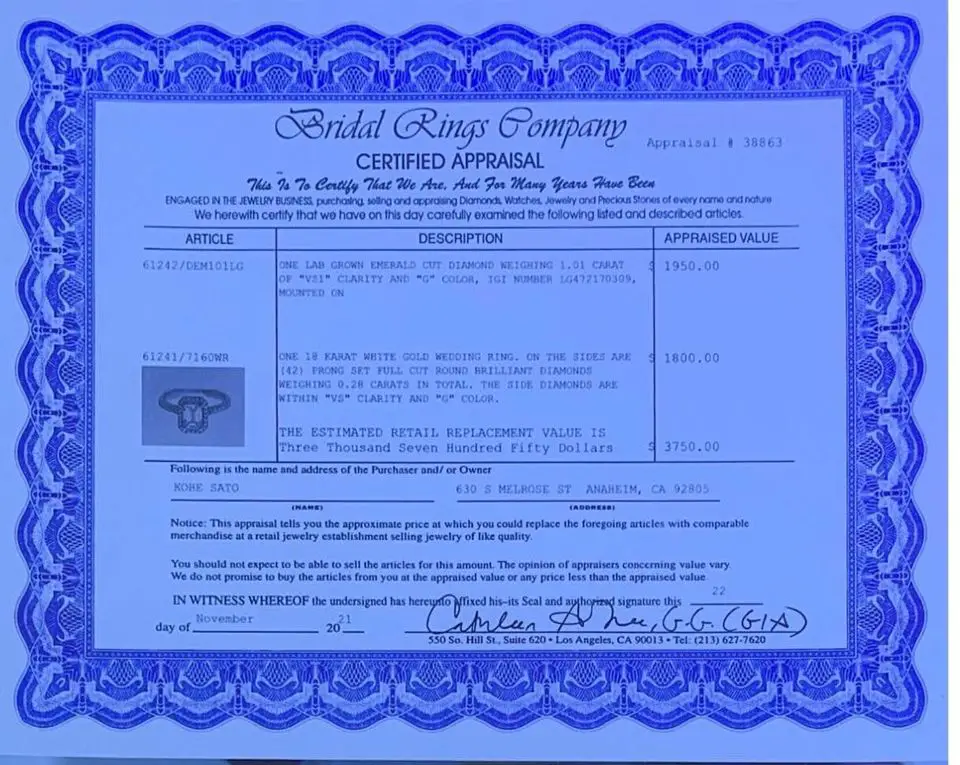
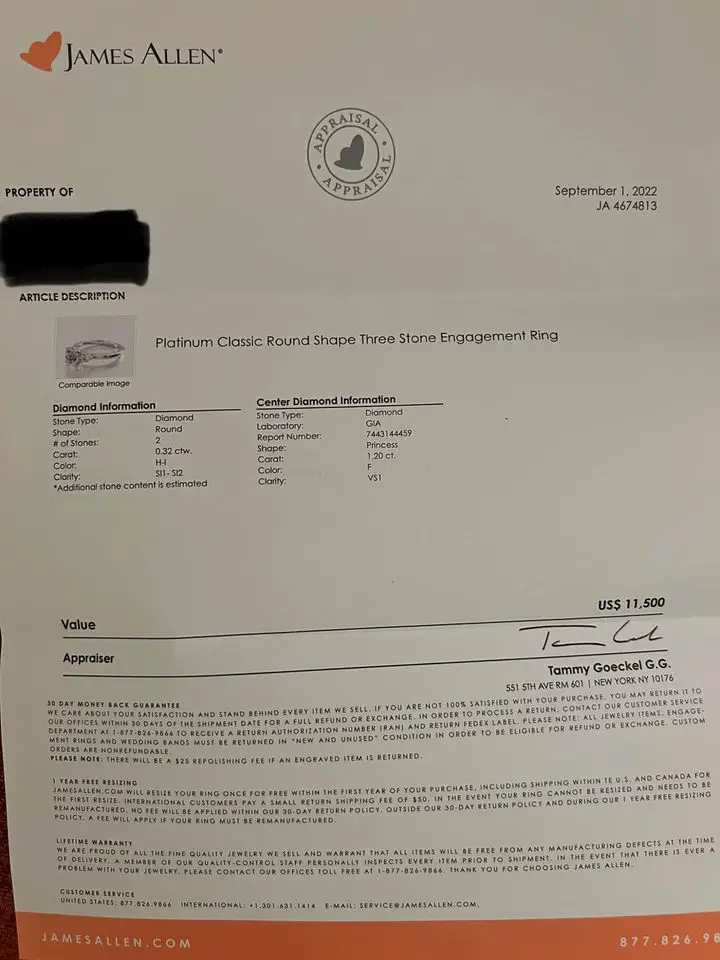
Benefits of Buying a Certified Diamond
Buying a certified diamond gives you several important advantages:
- Confidence that your diamond is genuine
- Verification that the quality matches what the seller claims
- Ability to compare diamonds accurately
- Documentation of the diamond’s value
- Record of identifying details
- Protection if the diamond is misrepresented
- Better resale potential
Cost of Diamond Certification
Certification costs vary based on the lab and the diamond’s size. Here are typical fees:
| Carat Weight (ct) | Certification Cost (GIA) | Certification Cost (AGS) |
|---|---|---|
| 0.5 | $85 | $65 |
| 1.0 | $200 | $250 |
| 2.0 | $350 | $350+ |
These costs usually represent 1-3% of the diamond’s total value—a small price for the assurance certification provides.
How to Read a Diamond Certificate
Understanding your diamond’s certificate helps you make informed decisions:
- Check the shape and dimensions against the diagram
- Verify that the carat weight matches what you expected
- Review the clarity grade and inclusion map
- Look at the color grade (D is colorless, with yellowing increasing as you move down the alphabet)
- Note the cut grade, which affects sparkle and brilliance
- Examine comments on polish and symmetry
- Confirm the certificate number matches the inscription on your diamond
Decoder: What Diamond Certificate Comments Really Mean
Certificate comments often use technical language that can be confusing. Here’s what some common notations actually mean for your diamond:
“Fluorescence: Medium Blue” – The diamond glows blue under UV light. Medium fluorescence can make slightly yellow diamonds appear whiter in daylight, potentially giving you better value.
“Additional clouds not shown” – The diamond has more tiny crystal inclusions than what’s shown on the clarity plot. This can sometimes affect brilliance in SI2 and lower clarity diamonds.
“Surface graining not shown” – Natural growth lines exist in the crystal structure. Usually not visible to the naked eye but can affect the clarity grade.
“Pinpoint inclusions” – Tiny crystal inclusions that typically don’t affect appearance unless present in large numbers.
“Indented Natural” – A small portion of the rough diamond’s original surface remains. Often not problematic unless it affects the setting.
These comments provide valuable clues about diamond characteristics that aren’t captured in the main grades but could affect appearance and value.
Where to Buy Certified Diamonds
For the best selection of certified diamonds, consider:
Online Retailers
- James Allen (offers 360-degree diamond views)
- Blue Nile (large selection of GIA and AGS certified diamonds)
Brick-and-Mortar Stores
- Tiffany and Co.
- Helzberg Diamonds
- Robbins Brothers
- Whiteflash
Important Tips
When buying, always verify that the diamond you receive matches the certificate by checking the inscription on the diamond’s girdle (edge).
Key Points About Diamond Certification Reliability
Independent Verification Is Essential
Even when buying from a trusted jeweler, get independent certification. This gives you verified documentation of your diamond’s quality from an unbiased source rather than relying solely on the seller’s claims.
Certification Quality Varies Between Labs
Remember that GIA and AGS maintain the strictest grading standards in the industry. Their consistent, conservative approach makes their certificates the most respected and valuable in the market.
How Certification Affects Diamond Value
Certified diamonds typically command higher prices but also maintain better resale value. The certifying lab affects price too—diamonds with GIA certification often cost more than identical diamonds with certification from less rigorous labs.
Practical Tools to Verify Your Diamond Certificate
Check Certificate Authenticity
Most major gemological labs offer online verification tools where you can enter your certificate number to confirm it’s genuine:
- GIA: Report Check
- AGS: Laboratory Report Verification
- IGI: Verify Report
Use these tools to ensure your certificate isn’t counterfeit—especially when buying from unfamiliar sources or getting a significant discount.
Mobile Apps for Diamond Verification
Several mobile apps can help you verify certificate details while shopping:
- GIA 4Cs App (free) – Explains grading scales and includes a verification tool
- Diamond Calculators (free) – Helps estimate value based on certificate specifications
- AGS Lab Locator (free) – Finds nearby AGS jewelers who follow ethical standards
Red Flags to Watch For
Be cautious if you notice:
- A certificate without a plotted diagram of inclusions
- Grades that seem too good for the price
- A certificate from a lab not listed in this guide
- Reluctance from the seller to provide the original certificate
- Missing or inconsistent measurements
How to Use Certificate Details for Better Value
Smart shoppers use certification data strategically:
- Choose diamonds just under whole carat weights (0.9ct instead of 1.0ct) for better value
- Consider SI1 clarity if the inclusion map shows flaws are near the edge where settings can hide them
- Look for “Excellent” polish and symmetry with a “Very Good” cut grade for optimal sparkle-to-price ratio
- For colorless diamonds, consider H color instead of D-F for significant savings with minimal visible difference
The Bottom Line on Diamond Certification
Diamond certification provides peace of mind when making a significant purchase. While it adds a small cost, the benefits far outweigh the expense. With a certificate from a reputable lab, you can be confident you’re getting exactly what you pay for.
Always ask for certification from a respected lab when buying a diamond, and take time to understand what the certificate tells you about your purchase. This small step will help ensure your diamond is everything you expect it to be.
